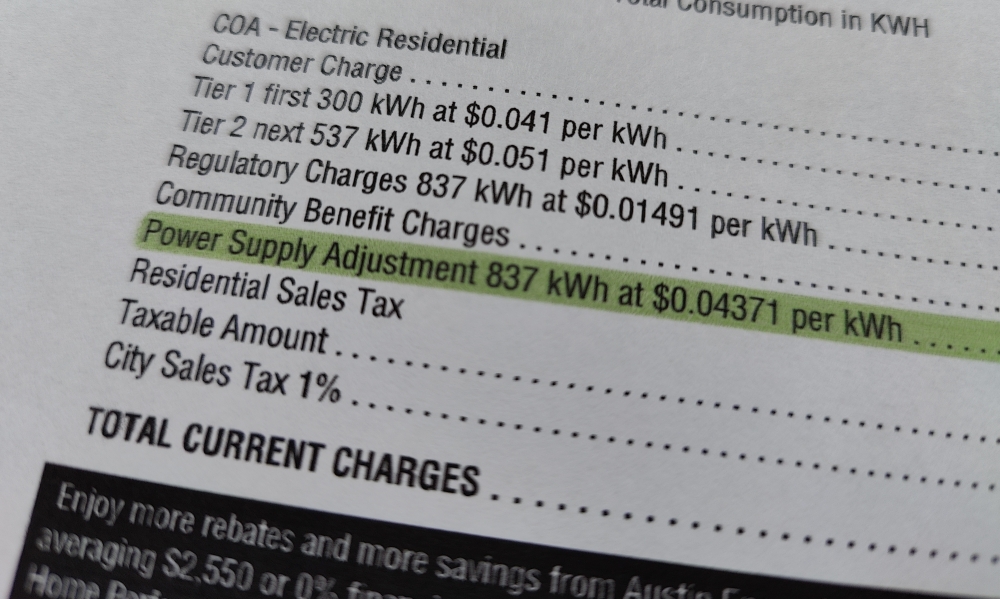What's happening
AE's utility bills include several components, some of which are based on customers' monthly power usage and some of which are standardized across all bills.
For example, AE's "customer charge" is a flat $13 per month for residents regardless of how much power is used. However, base energy charges have rates on a tiered scale that increase with power usage.
On Oct. 1, one charge on customers' bills tied to power usage—the Power Supply Adjustment, or PSA, charge—will increase 5%.
Today, residential customers inside city limits are billed $0.04371 per kilowatt-hour for the PSA; that will jump to $0.0459 per kWh next month.

The context
Last year, AE moved ahead with two separate rate increases that added hundreds of dollars to the average residential customer's annual electric bill.
In response to criticisms about those hikes and the potential "rate shock" experienced by AE customers, City Council adopted a schedule for some of the billing effects to gradually roll out over multiple years.
The first increase was related only to the PSA and went into effect in late 2022. The initial increase to AE's overall base rates was effective as of this March.
The specifics
The PSA is a pass-through charge related to the statewide power grid manager, the Electric Reliability Council of Texas. PSA charges are billed to Texans to recover costs for ERCOT, including power purchasing and legal settlements.
AE moved to adjust Austinites' PSA last year due to the utility's significant under-recovery of costs—an estimated $102 million at the time of last November's rate change—related to the 2021 winter storm, the rise in global energy costs and changes at ERCOT.
Along with that increase, AE was also granted the ability to tweak the PSA each month depending on how cost recovery was going. The upcoming increase in October will be the first time the utility has made such an adjustment since last year.
According to AE General Manager Bob Kahn, the anticipated PSA recovery was going relatively well until this summer. Under the new billing structure, AE's under-recovered balance dropped by about 46% since November to $55 million as of July 31.
However, Kahn said "extraordinarily high" pricing in the power market caused AE's under-recovered balance to jump all the way back to $102 million in one month.
"For the month of August 2023, Austin Energy expects an under-recovery of an additional $47 million due to continued extreme heat resulting in upward pressure on market power costs as well as continued transmission congestion related to import limitations, renewable generation curtailments and a lack of sufficient power generation capacity within the Austin Energy load zone," Kahn wrote in a Sept. 7 memo.
Despite last fall's rate hike, Kahn said the summer swing effectively means AE has now "made no progress" on cost recovery, leading to the decision to once again increase the PSA.
What's next
One month after the PSA change goes into effect, AE will begin billing customers under a new schedule of charges stemming from the 2022 base rate update process. Some new charges will be finalized by council in early October.
The next round of changes will be effective for one year beginning Nov. 1. An additional base rate adjustment will go into effect starting Nov. 1, 2024.
Council's AE oversight committee is next scheduled to convene on Sept. 19, its first regular meeting since May.





